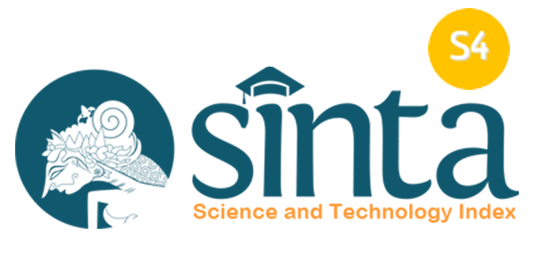Undergraduates Perception Towards The Use of Google Classroom for Learning
Abstract
Keywords
Full Text:
PDFReferences
Anthony, A. B. (2012). Activity theory as a framework for investigating district-classroom system interactions and their influences on technology integration. Journal of Research on Technology in Education, 44(4), 335-356.
Enoch, Y., and Soker, Z. (2016). Age, gender, ethnicity and the digital divide: university students’ use of webbased instruction. Open Learning, 21(2), 99-110.
Espinosa, N., Estira, K. L., and Ventayen, R. J. M. (2017). Usability evaluation of google classroom: Basis for the adaptation of gsuite e-learning platform. Asia Pacific Journal of Education, Arts, and Science, 5(1).
Hwang, G.-J., Lai, C.-L., and Wang, S.-Y. (2015). Seamless flipped learning: a mobile technology- enhanced flipped classroom with effective learning strategies. Journal of Computers in Education, 2(4), 449–473.
Iftakhar, S. (2016). Google Classroom: what works and how? Journal of Education and Social Sciences, 3(1), 12-18.
Ismail, N. (2015). The integration of new media in schools: comparing policy with practice. International Education Studies, 8(12), 231-240.
Kumar, J. A., and Bervell, B. (2019). Google Classroom for mobile learning in higher education : Modelling the initial perceptions of students. Education and Information Technologies, 24(2), 1793–1817.
Morgan, R. K. (2008). Exploring the pedagogical effectiveness of clickers. InSight: A Journal of Scholarly Teaching, 3, 31-36.
Northey, G., Bucic, T., Chylinski, M., and Govind, R. (2015). Increasing Student Engagement Using Asynchronous Learning. Journal of Marketing Education, 37(3), 171–180.
Ramdhani, N. (2009). Model behavior using ict "NR2007" development of the technology acceptance model (tam). Psychology Bulletin, 17(1), 17-27.
Spring, K. J., Graham, C. R., and Hadlock, C. A. (2016). The current landscape of international blended learning. International Journal of Technology Enhanced Learning, 8(1), 84–102.
Storz, M. G., and Hoffman, A. R. (2013). Examining response to a one-to-one computer initiative: Student and teacher voices. RMLE Online, 36(6), 1-18.
DOI: https://doi.org/10.17509/ijotis.v2i2.46440
Refbacks
- There are currently no refbacks.
Copyright (c) 2022 Universitas Pendidikan Indonesia

This work is licensed under a Creative Commons Attribution-ShareAlike 4.0 International License.
Indonesian Journal of Teaching in Science (IJoTIS) is published by Universitas Pendidikan Indonesia (UPI)
 Indonesian Journal of Teaching in Science
Indonesian Journal of Teaching in Science



